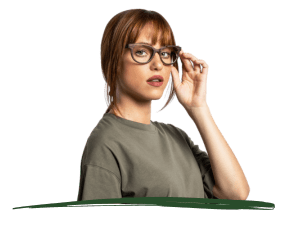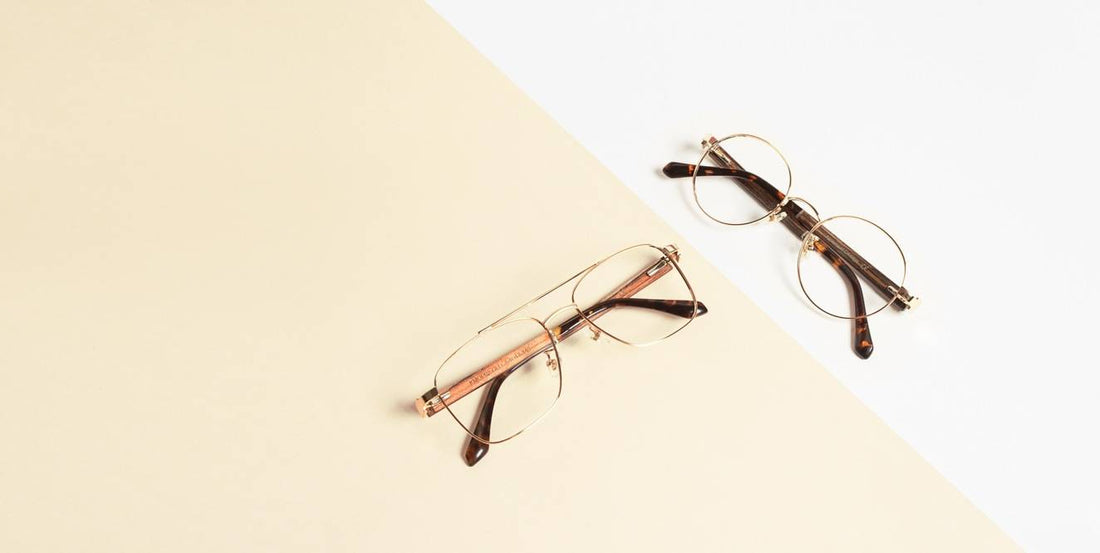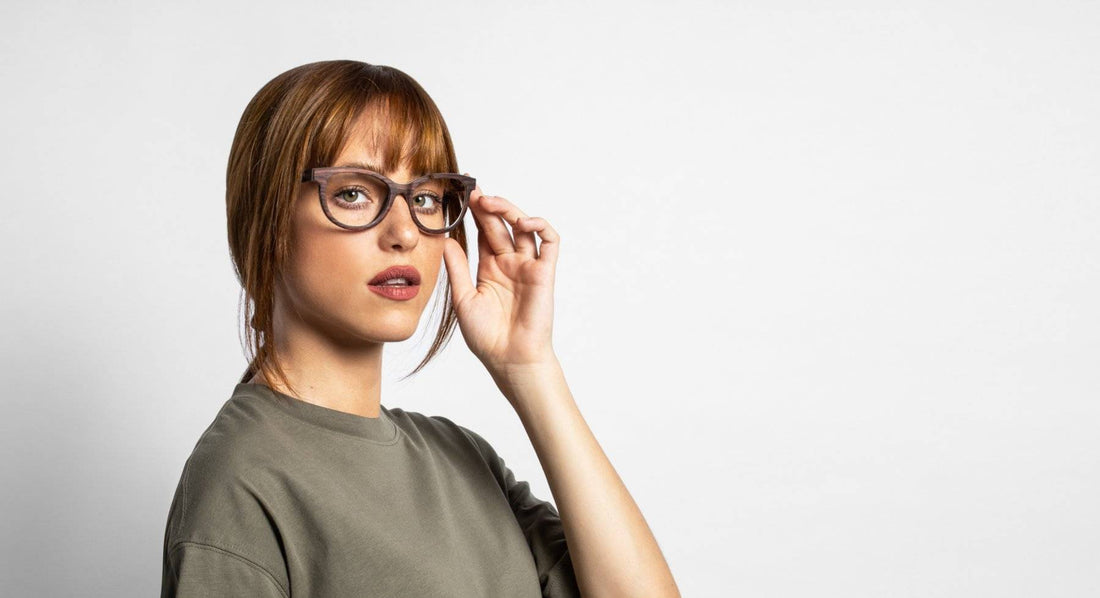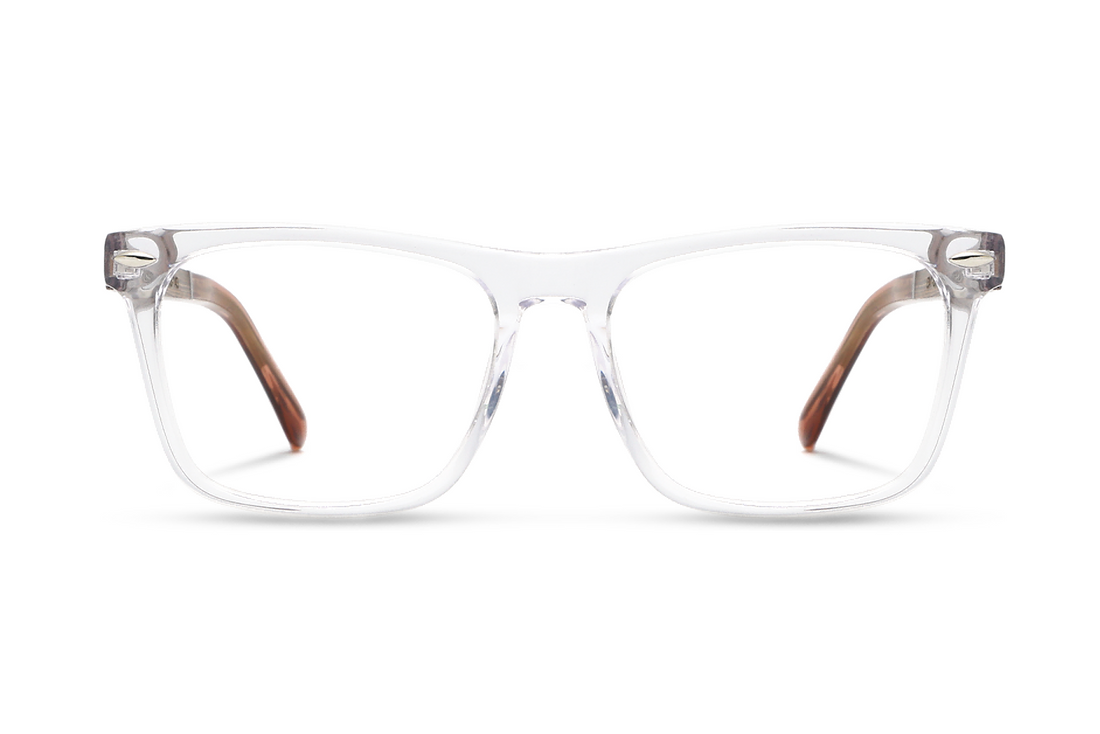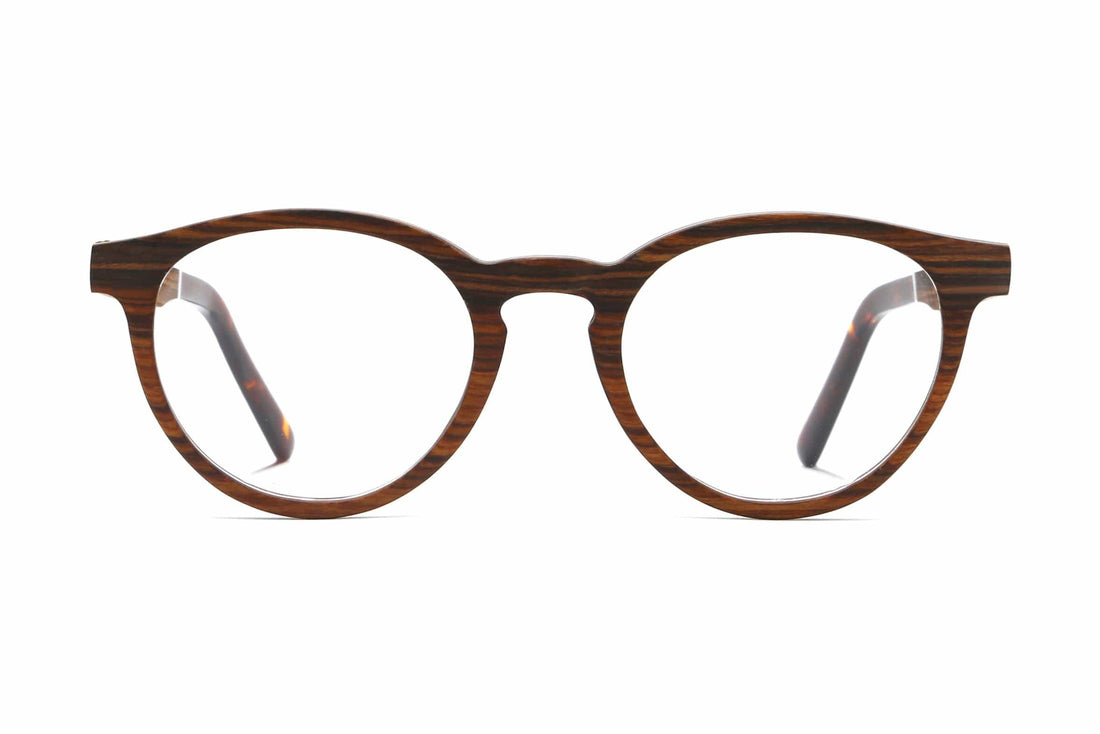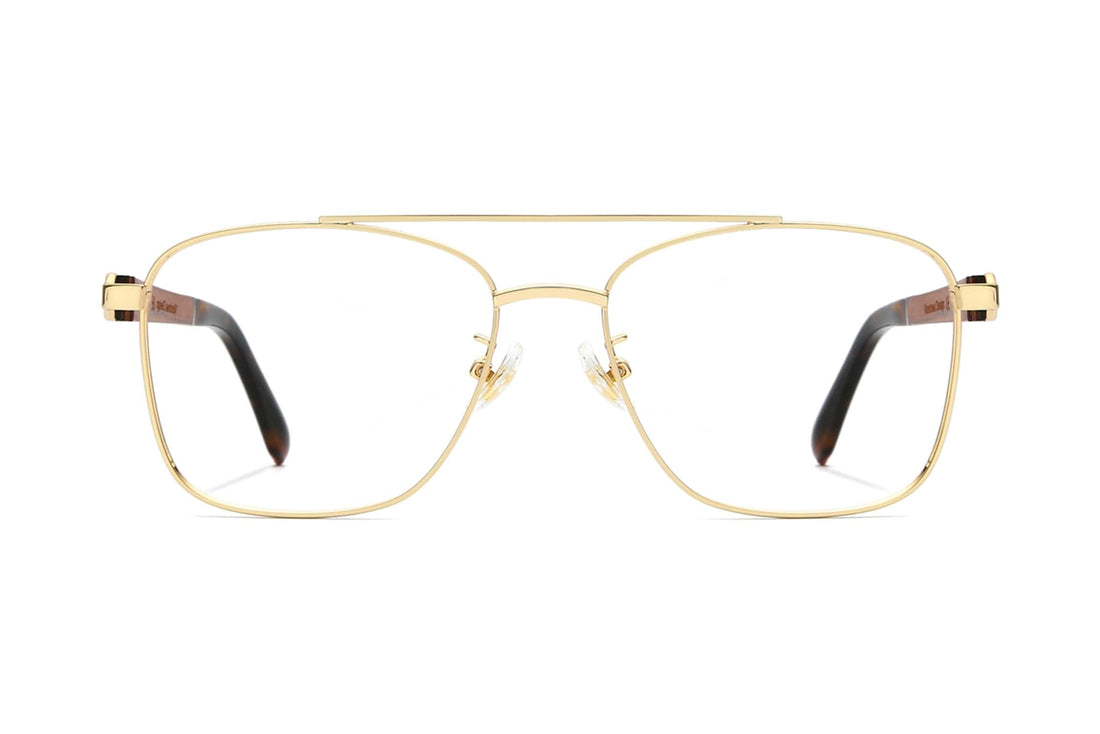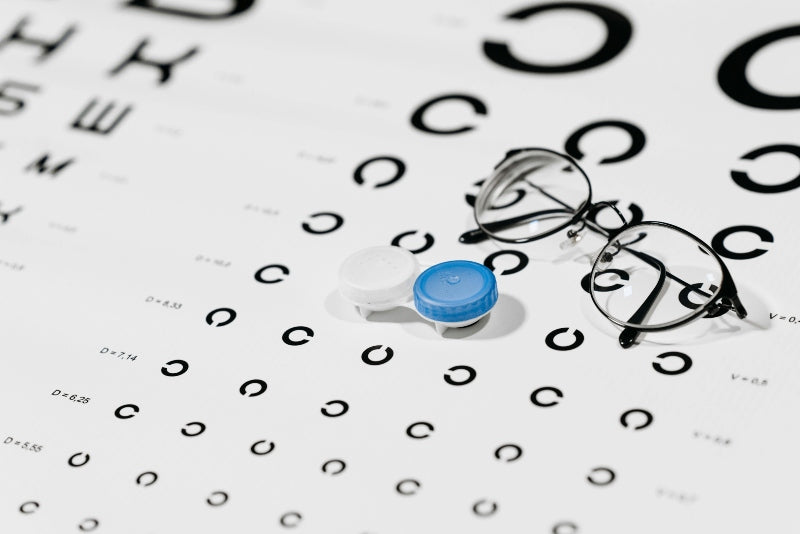
Contacts vs. Glasses: Pros, Cons, and How to Choose What’s Best
Contacts vs. Glasses: Which Should You Wear?
8 min read • Posted on 14 August 2025
Trying to decide between contacts and glasses? You’re not alone. Whether it’s your first time needing vision correction or you're thinking of switching things up, the choice can feel surprisingly personal. Glasses are a go-to for convenience and style, while contacts offer invisible clarity and freedom.
In this post, we’ll break it all down—no jargon, no pressure. Just the pros, cons, and tips you need to figure out which option suits your lifestyle (or whether you should just rock both). Let’s get into it:
Here’s what you’ll find:
Before we dive into the nitty-gritty details, we want you to feel at ease with what’s coming. This guide is your no-pressure companion to understanding what works best for your eyes, style, and daily routine.
-
What makes glasses or contacts better for different needs
-
The biggest pros and cons of each
-
A simple comparison to help you decide
-
Helpful tips based on real-life situations
How Do Contacts and Glasses Work Differently?
Both contacts and glasses help you see clearly—but they go about it in pretty different ways.
Glasses work by sitting just in front of your eyes, bending light through the lenses to help it focus properly on your retina. Easy, breezy, and frame-forward. You pop them on, and boom—vision corrected.
Contacts, on the other hand, rest directly on the surface of your eye. That means they move with you and provide a wider, more natural field of view (no frames in sight). They’re practically invisible, which makes them super popular for folks who don’t want to change their look.
Let’s break down a few more key differences:
Modern lenses and cleaning routines are a big part of making these options safe and comfortable.
Breathability matters:
Most modern contacts, like silicone hydrogel lenses, allow oxygen to pass through so your eyes can "breathe." But if you skip cleaning or overwear them? Your eyes might feel dry or irritated.
Contacts need a schedule
Whether you wear dailies, bi-weeklies, or monthlies, they have to be replaced on time. If not, you could be inviting dryness—or worse, an infection.
Maintenance routines differ
Glasses? Quick wipe and you’re done. Check out how you can easily keep your glasses in good shape. Contacts? You'll need to clean them daily, use disinfecting solution, and store them properly in a clean case. It’s a little extra effort—but for many, the benefits are worth it.
Pros and Cons of Glasses
Let’s talk about the classics. Glasses have been around for centuries, and for good reason—they’re easy, effective, and these days, incredibly stylish. Whether you're into bold frames or something more minimal, glasses let you express yourself while correcting your vision.
One of the biggest perks of glasses? Simplicity. Just pop them on and you're ready to go. There's no learning curve, no handling of lenses, and definitely no touching your eyes. They're especially great if you’re a bit squeamish or just want something low-maintenance.
They can also be a bold fashion statement—or a subtle one, depending on your vibe. With endless frame styles, materials, and colors, glasses can say a lot about your personality. And let’s not forget: they’re generally more budget-friendly over the long haul, since you’re not constantly replacing them like disposable contacts.
But of course, glasses aren’t perfect.
They can fog up when you're sipping something warm or stepping into the cold, and they may feel bulky during a workout. They also slightly limit your peripheral vision since you're seeing through frames—and that can take a bit of adjusting to. Some people also find them tricky to pair with helmets or goggles.
Still, if you’re logging long hours on screens or your eyes need a break from contacts, glasses are the comfort pick.
Pros and Cons of Contacts
If you’re someone who loves the idea of fuss-free vision without anything on your face, contacts might be your new best friend. They’re nearly invisible, stay put while you're active, and offer a wide field of vision that glasses just can't match.
One of their biggest draws is how seamlessly they fit into daily life—no fogging, no slipping, and no interference with your style (or makeup!). Athletes and active folks love them for that reason alone.
That said, they do require a bit more responsibility. You’ll need to keep them clean, replace them on schedule, and follow hygiene practices closely. Otherwise, your eyes could end up irritated—or worse.
Also, not everyone finds them easy to put in or take out. And if you spend hours staring at a screen, contacts can dry out your eyes faster than you’d expect. So while they’re great for flexibility and freedom, they come with their own set of trade-offs.
According to the American Optometric Association, following proper care guidelines is crucial for avoiding complications. The CDC also warns that improper use or extended wear can lead to infections or long-term damage.
Quick Comparison: Glasses vs. Contacts
Still feeling torn? No worries—we’ve put together a quick side-by-side to help you see how these two options stack up. It’s like a cheat sheet for your eyes.
Take a look at this comparison table to see which features matter most to your lifestyle:
| Aspect | Contacts | Glasses |
| Field of Vision | Contacts move with your eye, offering up to 40% greater peripheral vision and virtually no distortion at the lens edges. | Glasses can distort peripheral vision, especially with strong prescriptions. |
| Convenience | Lightweight and stable. Ideal for sports, workouts, and active days. | Quick to put on and remove; easy cleaning routine. |
| Maintenance | Requires daily care: cleaning, disinfecting, and careful storage. Poor hygiene can lead to infections (CDC). | Easy to clean with microfiber cloth and eyewear solution. |
| Comfort & Eye Health | Modern silicone hydrogel lenses allow oxygen flow, but dry eyes, allergies, or overwearing can cause corrosion or discomfort. | Comfortable and sit away from the eye, no risk of contact-related irritation. |
| Cost Over Time | Recurring costs: lenses, solution, and supplies. Daily disposables can add up. | One-time frame and lens cost. Possible upgrades as style or prescription changes. |
| UV Protection | Some daily disposables offer UV filters, but not all. | Many sunglass-style frames include UV400 protection, reducing eye strain and UV risk. |
| Vision Quality | High clarity and freedom of movement; fragile and can cause discomfort if misaligned. | Stylish, easily customized with coatings (anti-reflective, blue light) and varied shapes. |
This table gives you the big-picture view, but remember, you don’t have to pick a side forever. Your ideal solution might be a little bit of both!
Which One is Right for You?
Now that we’ve explored the details, let’s talk about you. Because at the end of the day, choosing between glasses and contacts comes down to what works for your lifestyle—and what feels right.
If your eyes tend to be dry or sensitive, glasses might be your better bet. They don’t touch your eyes and give them space to breathe. Plus, they’re a cozy, low-maintenance pick for long days in front of a screen. And in this case, you might want to explore the importance of blue light coating in glasses.
On the other hand, if you’re always on the move or love hitting the gym, contacts can give you that freedom without any slipping or fogging. They stay put no matter what, and let you forget they’re even there.
Love fashion or making a statement? Glasses let you play with your look and add personality to any outfit. Prefer a natural, no-fuss appearance? Contacts keep things invisible and distraction-free.
And here’s a little secret: you don’t have to choose just one.
A lot of people wear both—glasses for laid-back days, and contacts when they’re out and about. It’s all about having options that fit your mood and routine.
Why Kraywoods Eyewear Is a Smart Choice
Whether you wear glasses full-time or keep them as your backup to contacts, it helps to have a pair you genuinely love—and trust. That’s where Kraywoods eyewear comes in.
What sets Kraywoods apart? It’s the kind of eyewear that’s designed to work as hard as you do.
Blue light protection without the extra cost
If you’re spending your day on screens, Kraywoods offers blue light filtering lens options that ease digital strain and keep your eyes feeling fresh.
Thoughtful frame designs for all-day comfort
With lightweight materials and ergonomic builds, Kraywoods eyewear frames are made for real life—whether you're commuting, working, or relaxing.
Versatile styling for everyday wear
From classic to bold, every frame is crafted with timeless style in mind. You won’t need a different pair for every occasion—just the one that fits you best.
When you’re ready to elevate your eyewear game, take a moment to explore Kraywoods’ full eyewear collection or visit our eyewear blog for more advice.
Frequently Asked Questions
Can I wear contacts and glasses at the same time?
Absolutely! A lot of people wear glasses at home or during screen time, and switch to contacts for workouts or going out.
Are contact lenses safe?
Yes, as long as you care for them properly. Follow CDC hygiene guidelines and never sleep in lenses not designed for overnight use.
Can glasses correct all types of vision problems?
For the most part, yes. Glasses can correct nearsightedness and farsightedness, in addition to astigmatism and more. Your optometrist will recommend what’s best for your eyes.
Which is more affordable: glasses or contacts?
Glasses typically win in the long run. Contact lenses (especially disposables) can add up with frequent replacements and cleaning solutions.
What’s better for kids: glasses or contacts?
Depends on the child! Glasses are easier to manage, but older or more responsible kids might do well with contacts, especially for sports.
Can I switch between glasses and contacts?
Totally. Many people wear both depending on the day, their outfit, or their activity level. It’s nice to have options!
Final Thoughts
Whether you’re team glasses, team contacts, or somewhere in between, what really matters is choosing what fits you—your lifestyle, your comfort level, and your personal vibe.
Glasses bring ease and style, while contacts offer freedom and a full field of vision. And the good news? You don’t have to pick just one. Having both on hand lets you switch things up depending on the day.
And if you are leaning toward glasses (or need a stylish backup), Kraywoods is here to help with sustainable, handcrafted frames that don’t just look good—they feel amazing, too.
Want more tips or eye care insights? Check out the Kraywoods blog or dive into our eyewear collection to find your perfect fit.
 Rayhan El-Asmar
Rayhan El-Asmar
